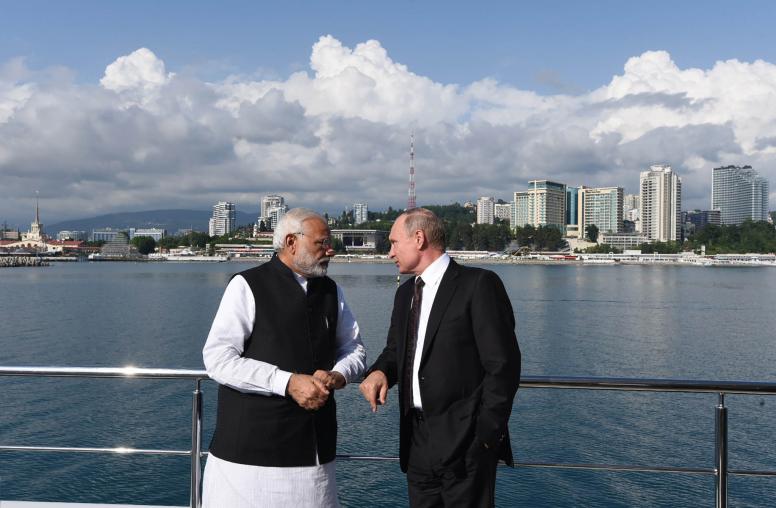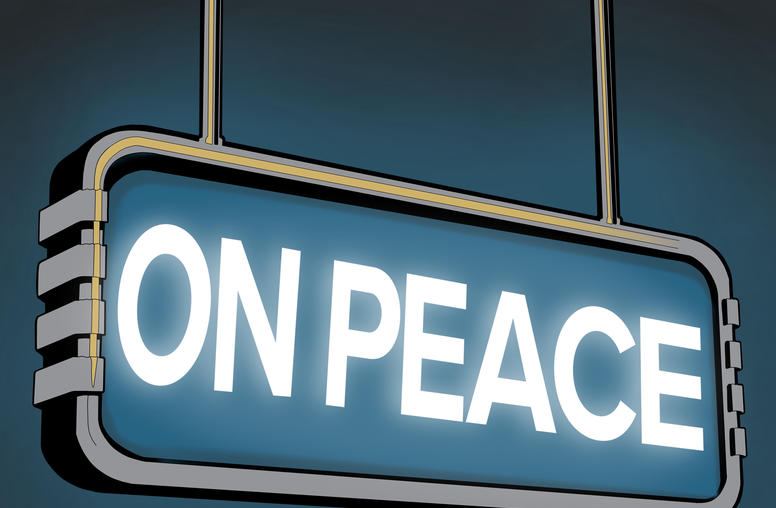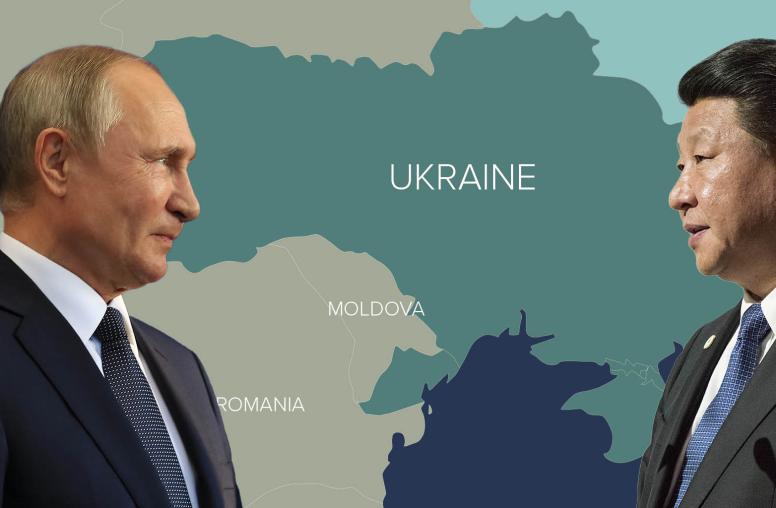In Ukraine’s Second Winter of War, Peace Still Requires Justice
Ukrainians continue to defend a global rule of law — for themselves and for the rest of us.
Last week, I had the privilege of meeting 12 female legal professionals from across Ukraine who were visiting Washington. They ranged from a prosecutor with the anti-corruption bureau to a supreme court judge, all eager to rebuild their country, making it stronger than before the war. One participant asked rhetorically: “What is peace? Is it the absence of war? Or is it something more — the prospect for justice? The ability to pursue prosperity?” I’ve been thinking about those words — and their implications for how the world should respond now to the Russian assault on Ukraine as it enters its second, hard winter.

My interlocutor’s questions are right, of course. Peace isn’t just the absence of war. It’s the restoration of what was lost. It’s accountability and justice. It’s the ability to prevent it from happening again. It’s the ability to pursue a prosperous future. In the 22nd month of Russian President Vladimir Putin’s unprovoked war on Ukraine, those questions underscore our continued responsibility — and global self-interest — in achieving a peace that not only stops the brutality but ensures it doesn’t happen again.
Formalizing the Vision
In 2022, Ukrainian President Volodymyr Zelenskyy first outlined his formula for peace. It set forward an ideal for not only how this war would end, but how all wars should be fought and should end. Since then, the Ukrainian leader and his government have detailed the vision in 10 points. They are: radiation and nuclear security; food security; energy security; the release of all prisoners and deportees; restoration of Ukraine’s territorial integrity; withdrawal of Russian troops and cessation of hostilities; punishment for war crimes; protection of the environment; security guarantees and a ceasefire agreement. In short, the points include not only a formula for ceasefires and accountability but the demand to prevent the weaponization of food and the environment and procedures to prevent the conflict from reigniting.
Kyiv has sought support for this vision. “Peace needs co-authors,” Zelenskyy’s chief of staff, Andriy Yermak, said in a speech last month. Ukraine has worked steadily to expand its presentation of its peace plan, seeking support from the entire global community. Ukraine hosted its first summit based on these 10 points in Copenhagen in June with 15 countries participating. Discussions reportedly delved into topics ranging from humanitarian concerns to how the conflict will end. Participation has since grown, to 43 nations in Jeddah in August, and then to 65 attending at the most recent summit in Malta in late October.
Turning Visions into Actions
Diplomatic work to end a conflict often starts with envisioning an achievable future — much as Zelenskyy has so elegantly done with his 10 points. Ukraine now faces two hurdles to bring this vision to reality: a rapidly complicating geopolitical picture and the detailed, technical work that is needed to translate these 10 points into concrete, executable policies.
The Israel-Hamas conflict has dominated headlines and drawn attention away from Ukraine. This can only aid Putin, who almost certainly plans to draw out his assault on Ukraine in a war of attrition and hope the West gets weary and distracted. Moscow is already increasing its attacks on Ukrainian civilian infrastructure this winter, as it did last year, in an attempt to wear down the Ukrainian will to fight.
In the face of crises that distract attention from Ukraine, Defense Secretary Lloyd Austin and other U.S. officials have applied President Biden’s frequent admonition that the United States “can walk and chew gum at the same time.” Washington should continue to highlight Russian aggression and declassify what it can of Russian plans to take away any element of surprise. Shining a light on Russian actions that the Kremlin hopes to keep secret — and on a war it hopes might be forgotten amid others — will help ensure that other members of the rules-based international order will hold Putin accountable.
It is also important to detail the vision, and bring together proposals on how to implement these plans. A fourth summit is planned for the coming months, and presumably will begin in earnest the hard work of pre-negotiations — ironing out any disagreements between Ukraine and its allies on the details of this formula.
Washington can help here too. Helping round up the world’s leading experts in international law, nuclear security, food security and other areas can ensure that Ukrainian policymakers can have the best technical expertise as they formulate their policies. Presumably, Kyiv will also think through what it desires on territorial integrity and deterrence measures. War termination theory asserts that, in order to prevent conflicts from breaking out again, there must be a deterrent cost for restarting conflicts and also institutions to facilitate trust between the combatants. Ukraine understandably will remain wary, and the global community must provide security guarantees and use trusted institutions to stand between the combatants.
Conclusion
With winter’s onset, following Ukraine’s summer counteroffensive, “we have a new phase of war, and that is a fact,” Zelenskyy said in an interview last week. “But this does not mean that we should give up. We are confident in our actions. We fight for what is ours.” Washington and other Ukrainian allies should continue to stand with Ukraine, and bring as many resources as they can to help Kyiv win the fight, both on the battlefield and diplomatically.



